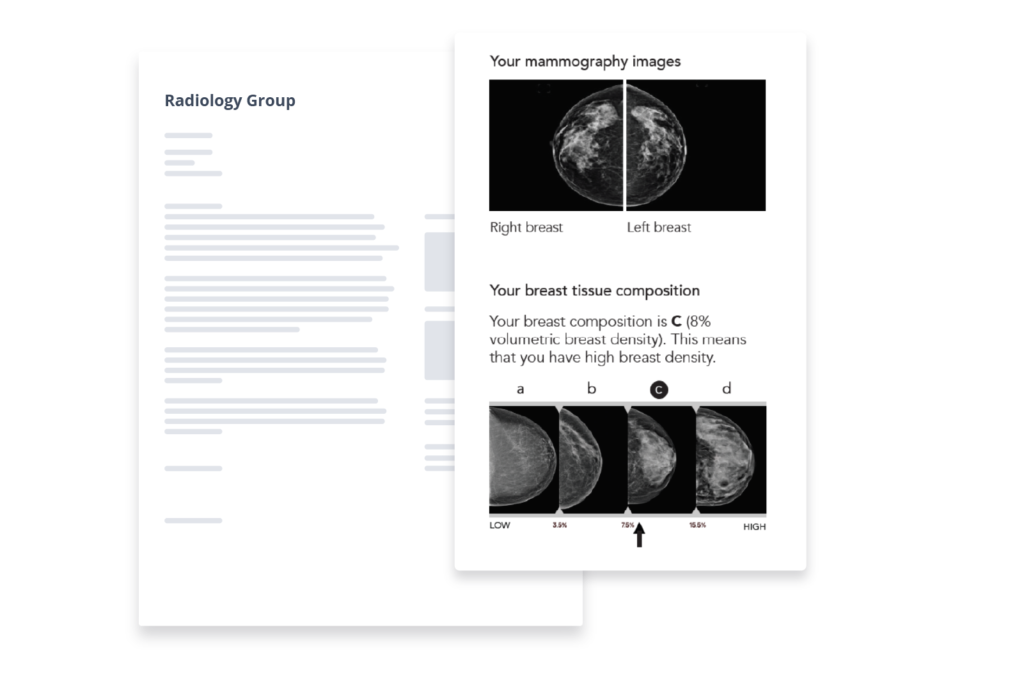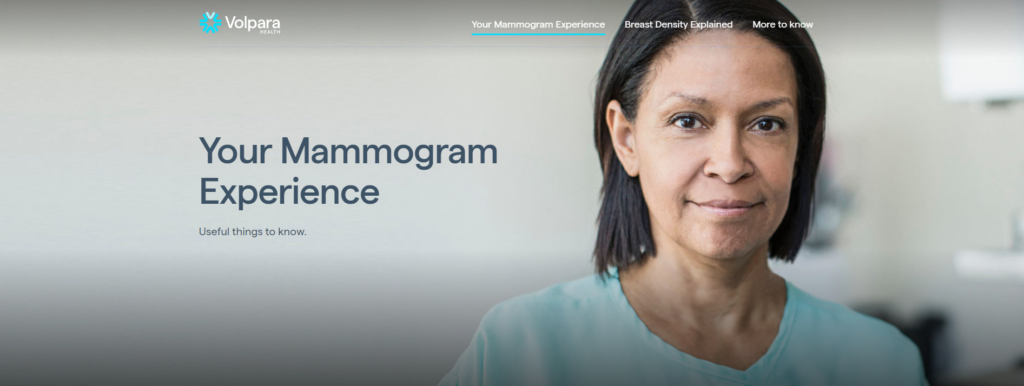Concern for women with high breast density is one of the reasons Volpara Health was founded. The company is dedicated to helping imaging centers better measure and assess breast density volumetrically to enable the earliest possible detection of cancer.
Volpara is now turning our attention to help women better understand their mammography experience and breast density so they can make informed decisions with their physicians to personalize their screening.
A woman’s breast density score is an important factor in both her risk of developing breast cancer1, and also for the risk of breast cancer being missed at screening.2
In the US, nearly half of all women over 40 have dense breasts.3 A mammogram is the crucial first step for understanding a woman’s breast composition. Many US state laws mandate that breast density be reported to women in their exam results, including recommended follow-up options such as additional imaging beyond mammography.
However, patient letters full of text can be difficult to understand. New communication tools are needed to make it easier to understand the concept of breast composition and tissue density, empowering women to better understand their breast health.
A more personalized mammography letter
What if a mammography report letter got really personal? Millions of women comply with their annual screening, yet they have never seen what their breasts look like on their actual mammogram. The addition of a woman’s own images can make it easier to grasp the concept of breast composition and tissue density. Read how Dr. Bruce Schroeder and patient advocates feel about women being provided a Volpara Density ProfileTM in their mammography report letters so they can understand their personal breast cancer risk.

Take a closer look at the Volpara Density Profile.
A new breast density resource for patients
Volpara’s science communication experts created a new educational website to better explain breast density. The clever website cuts through clutter and jargon to demystify what dense tissue can look like, how common different densities are, and what a woman’s recommendations for care may be.
References:
1. Engmann NJ, et al, JAMA Oncol. 2017;3(9):1228-1236
2. Mandelson et al. J Natl Cancer Inst 2000; 92:1081–1087.
3. Pisano et al. NEJM 2005; 353: 1773


